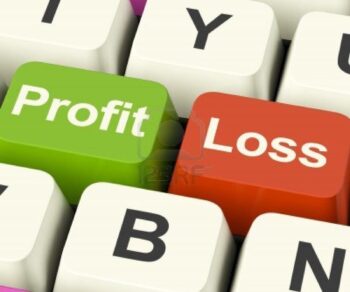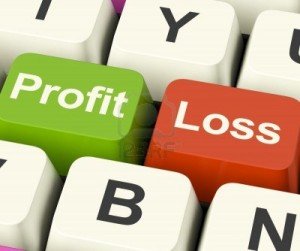
What do you want for your birthday this year?
Profit and cashflow are not the same: My birthday is this month and what I want is my business to grow 50% this year. Would you like one of those too?
Ok that can be organised, but what about next year?
Ah, yes, of course we actually want our businesses to continue to grow next year and the year after…
If your business is growing by more than a modest inflation-like rate or thereabouts, there are 5 key “factors” you MUST continually address:
- Your market focus
- Financial foresight and plans
- Your management plan and organisational structure
- Understanding of your own responsibilities and what you bring to the business
- Outside advice and support
This article is the first in a series of articles about sustainably growing a business and I want to tackle point (2), financial foresight, first.
Readies, Mullah, Dosh, Cash
The one factor that stifles and destroys growing businesses more than any other, is money, cash to be exact, “readies”, money you have available day to day. To be more precise… the lack of it.
There are millions of stories around the world of businesses that experienced fabulous growth, that were the darlings of the investment community. Companies that had “The Next Big Thing”, with profit levels to make every other business owner green with envy, issuing staggering forecasts…..and failed. Small and large, businesses just like yours.
If your business is going to grow, heed this warning and heed it well: If you do not plan for cash, you will not have it when you need it. Even if you somehow survive that crisis, it will cost you an arm and a leg, not to mention years of your life!
A business cannot grow unless you feed and water it with money. When you grow a pot plant, it will outgrow its pot when the plant increases in size by 25%. A business is just like that: As the business grows 25% or more, it will need a different pot of money to feed in. The ferociously growing business will soon dry up your own resources and those of your partner, and your parents etc. What you might have been able to finance through your own funds, a personally guaranteed overdraft, credit cards, and cheap money like 30-day trade accounts with suppliers, is suddenly ravenous for more.
Cash flows in slow and out fast
A “Rule of Thumb” used by jaded bankers and accountants when assessing the financial needs of a growth business is: Assume that receivables, (what you are owed) will take twice as long to collect as expected and payables, (what you owe) will need to be paid in half the time you expect.
It can be extremely tempting to look at a Profit and Loss (P&L) print from your bookkeeping programme and be lulled into a sense of security because you are showing a healthy turnover and great profit levels, talk about an aphrodisiac! But profit means very little, it is purely a number on a piece of paper, and bears virtually no relationship to your bank account or your ability to pay people and the sustainability of your business.
Bad News
In fact, net profit in your company is a liability! Let me repeat that in case you did not get it: Profit in a growing business is BAD NEWS!
Come again? How can that be? Well that is very simple: Net profit means you have to pay tax, and that means taking money out of the business and sending it to the ATO. Don’t get me wrong I am all for a healthy tax system, I like the fact that I was able to spend a week camping in a National Park over Christmas, all paid for by the tax system. However, it is your job to build a sound and healthy business, one that will pay its taxes for many years to come, not just this year. Making profits in the growth phase of a business simply means you will be drawing money out of the business that you will have to replace from somewhere else.
Musts for Cashflow
So, what are the recipes for financial success when leading a growing business?
At a high level, there are three “MUSTS” involved:
Delegating the bookkeeping to others, DOES NOT absolve you from the responsibility to keep control of the outcome. You simply MUST keep your finger on the pulse PRO-ACTIVELY! You are accountable for the health of the business, no one else.
You MUST put an effective financial control system in place, and monitor it.
You MUST put a cash flow forecasting system in place, and monitor it.
Let me give you the critical steps for the implementation of (1) and (2) above first:
Get the best bookkeeping system that is available, keeping in mind that the system has to be plenty big enough to cope if your business doubles triples or even quadruples in size.
Make sure that you have at least one person (with a backup) onboard, (if that isn’t you) in-house or external who knows the system inside out. They must be able to produce the answer to any question you might like to ask of the financial control system of the business.
Spend the time to become very very (that is VERY) clear what you need to know on a daily, weekly, monthly and quarterly basis. What are the critical indicators of the financial health of the business? If you do not know talk to your accountant, and make sure you understand what he or she tells you.
Write down what those critical indicators are, in unmistakable language, in a schedule.
If you have delegated the bookkeeping to others (note the word “delegate” not “abdicate”) communicate this schedule to them, make sure they understand the requirements, keep a copy of the schedule yourself, confirm that they are happy to meet ALL the requirements of the schedule and ask what they need from you or others to be able to meet them. (See also my article on effective delegating in the archive on my website)
As a matter of absolute priority, put time aside daily, weekly and monthly to ensure that you get everything you agreed with the bookkeeper. Peruse, understand and act upon the reports and information. Do not get slack with this, ask someone to push you on it if you need the extra kick up the backside, make it easy for yourself, but do it!
Cash flow, the Leaders job
The previous two points all lead up to this one. As I have said above, cash flow is the killer.
To be able to do useful cash forecasting, you cannot rely on your bookkeeping system alone, at least none of the ones I know. It requires the use of your brain, primed with the information, reports and other data you get from points (1) and (2) above. This is the work that the leader is called upon to do, that is YOU!
Cash flow forecasting is a bit of an art and by its nature can be somewhat rubbery, and that is exactly why many businesses put it in the “too hard” basket. By doing it regularly it will become more accurate, easier and take little time.
The essential principle is simple. It requires a spreadsheet to set it up. You can buy spreadsheet templates that will do the job for you and that is a reasonable option. Of course, you can also get help; your bookkeeper, your accountant or your business coach will all be able to help, assuming they know their trade.
The basic recipe is this:
- Take the bank balance on day 1 of month 1
- Deduct regular expenses for the month
- Deduct what you know you will have to pay during the month
- Deduct what you reasonably expect you will have to pay during the month
- Add what you know you will be paid during the month
- Add what you realistically expect (not “hope”) to be paid during the month
- Calculate the bank balance by the end of the month.
Next month:
Add closing balance of month 1, as opening balance of month 2
Repeat the process above
And so forth for every month of the year
For some businesses, it may be necessary to do this forecast on a week-by-week basis, but for most businesses monthly will give you what you need.
Simple really and of course as you get further into the future there will be a fair bit of guesswork involved but even allowing for that I promise you that you will get a nasty shock.
But wouldn’t you rather have the shock now? 6 months out from the looming crisis it will be quite feasible to do something about it, but one month or even a week out, the best case scenario is that it will be a very expensive experience, and the worst case scenario ……….
Purpose, Profit and the 7 Big Questions of Small Business
Business owners frequently ask 7 Big Questions about how to Build a Beautiful Business and Life.
The second of the 7 Big Questions is: How do I make more money in my business?
To answer the second question, I have identified 7 Rules for making more Profit in business.
The first of the 7 rules states that Profit is not the Purpose of business. This article also ties back to the fourth Rule, that “Cashflow is King“. There are many more articles on this site that explain how Purpose, Cash and Profit hang together, in some depth.
Download my 12 Question Cheat-sheet to help you find your next Coach.
Further Reading:
- “The E-Myth revisited”, By Michael Gerber
- “E-Myth Mastery”, By Michael Gerber
- “The E-Myth manager”, By Michael Gerber
- “The Essential Drucker”, By Peter F Drucker
- “Classic Drucker”, By Peter F Drucker
